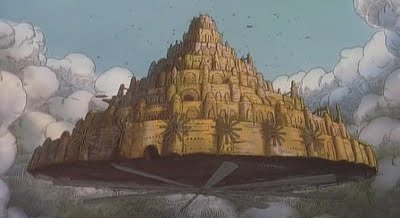Jonathan Swift, the First Design Critic

Stranded without books in our country house in August, I picked up at random an old copy of unabridged Gulliver’s Travels – and was instantly hooked. This book has a strange double life. Retold for children around the globe as a fun adventure story, the original text is actually very bleak, a bitter and misantropic satire of human mores and history.
In Part III, the author visits the flying island of Laputa and the kingdoms on the islands below. Immediately, Gulliver notices strange dysfunctional state of those territories: everything is in disrepair; people toil without any discernable results or benefits, even though sophisticated machines are always at work.
Explaining the reasons for this sad state of things, Jonathan Swift (writing in 1726) prefigures many future critics of Modernism. He puts in question the general effort of designers (Swift calls them projectors) to improve and innovate everything possible under the sun.
In the book, Gulliver learns that some young people came down from Laputa with little education, but with a strong desire for change. “These persons upon their return began to dislike the management of every thing below and fell into schemes of putting all arts, sciences, languages and mechanics upon a new foot.” They “contrive new rules and methods of agriculture and building, and new instruments and tools for all trades and manufacturers.” “The only inconvenience is, that none of these projects are yet brought to perfection, and in the meantime, the whole country lies miserably waste”.
Further on, Gulliver visits the Academy of Projectors (something like our Eindhoven Design Academy), and familiarizes the reader with some of their absurd innovations. The projects range from Droog Design-like experiments (producing the breed of naked sheep, without any growth of wool), to visionary architectural endeavors, such as “a new way of building houses, by beginning at the roof, and working downwards to the foundation, which the architect justified by the like practice of those two prudent insects, the bee and the spider.”
It is documented that Swift was well versed in science knowledge of his day. Whether he was suspicious of innovation in general, or just was wary of certain design excesses, we would probably never know.

